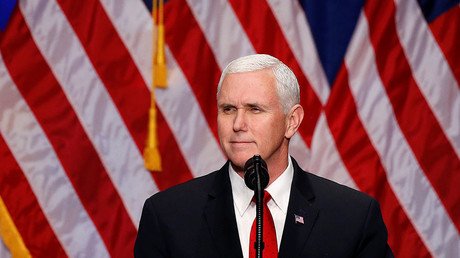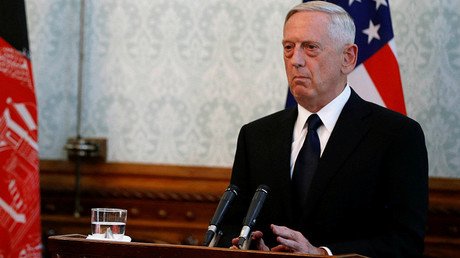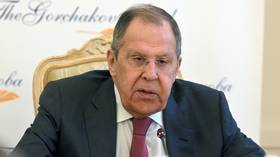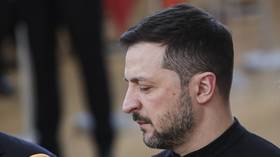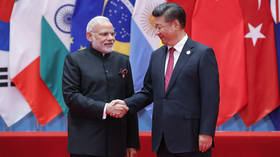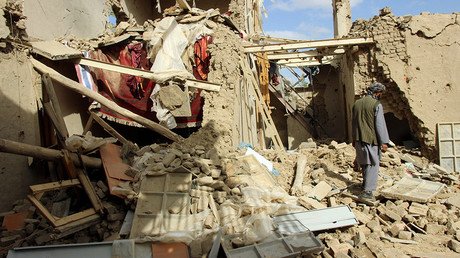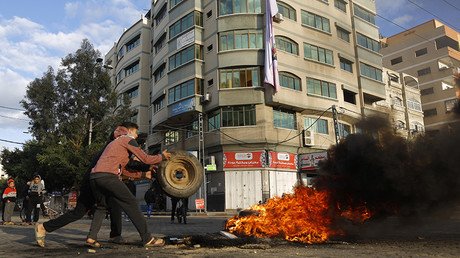Washington’s seasonal tidings of Phoenix-style dirty war for Afghanistan

This week saw another deadly bomb attack in the Afghan capital, Kabul, only days after US Vice President Mike Pence promised American troops “victory was in sight.”
This war is far from over, and signs are it will get much worse in the year ahead.
Lurking behind the cheery seasonal tidings brought by Pence lies a forthcoming year of much-increased violence in Afghanistan. Away from the upbeat headlines are portents of ever-deeper involvement by US elite forces in the country’s unrelenting mayhem.
In particular, the US military is moving toward a new strategy under President Trump of unleashing killer units in an apparent bid to drown the Afghan insurgency in blood. It’s a policy America has tried elsewhere, for example, the infamous Phoenix program of assassination during the Vietnam War. The policy usually fails in its stated objectives of “peace and security.”
The “surprise” nature of Pence’s whirlwind visit just before the weekend shows the Central Asian country’s security is on a knife-edge. The unannounced trip by the vice president – his first to Afghanistan – was reportedly “shrouded in secrecy” for security reasons.
Arriving on board a C-17 military plane at the giant US air base at Bagram, then flown by helicopter to meet with Afghan President Ashraf Ghani, the logistics were an unmistakable indicator of how dangerous the country is. This after 16 years of the most protracted US war ever – supposedly to defeat Taliban militants.
Earlier in September, when US Secretary of Defense James Mattis flew into Kabul International Airport, Taliban insurgents were reportedly able to launch a rocket attack on his aircraft. Mattis and his delegation did not come to harm. This time, however, US officials seemed to be taking no chances with Pence, flying the vice president under cover of darkness to the high-security military airbase.
Wishing troops a “Merry Christmas,” Pence said: “I believe victory is closer than ever before.” He assured American forces that President Trump’s new “fight-to-win strategy” for Afghanistan was “bearing fruit.”
“The results are really beginning to become evident around the country,” claimed Pence after meeting with Ghani. The question is: what “evidence” was he referring to?
'Gaining power': #ISIS has 10,000 loyal fighters in #Afghanistan, the number only to grow - Moscow https://t.co/eESIf88NgGpic.twitter.com/RTj37e6vS1
— RT (@RT_com) December 24, 2017
It was nearly four months ago, in August, that President Donald Trump announced a new plan for military involvement in Afghanistan. It was something of U-turn on his election campaign pledges last year to wind down American overseas wars.
Under Trump, up to 4,000 troops are to return to the country taking the total US presence there to 15,000. The numbers are set to substantially increase, according to Stars and Stripes, citing US Army Undersecretary Patrick Murphy.
The re-deployment to Afghanistan is still a lot less than the peak numbers during the Obama years when troop levels surged to 100,000. But there seems to be a qualitative shift under Trump marking more deadly involvement.
Trump’s “fight-to-win” strategy suggests US troops are to pursue much more aggressive tactics. Officially, the American military is supposed to be only “advising and training” local Afghan forces. But what the Trump administration is signaling is a return to heavy combat with elite infantry troops.
The Washington Post reported that Pence was briefed by the Afghan officials that “more senior Taliban leaders have been eliminated this year than in all previous years combined.”
If that’s confirmed, that marks a dramatic increase in US combat violence under Trump. It would also tally with Trump’s declared aim to give American commanders in Afghanistan a “freer hand” to carry out missions. This gloves-off policy under Trump has the hallmarks of US troops stepping up assassination squads to go after insurgents.
Another foreboding indicator is that US military journals are reporting, according to Stars and Stripes, elite combat troops being sent to Afghanistan in anticipation of sharper fighting in the Spring season. Those forces include infantry brigades from Fort Carson, Colorado, which are trained in “unconventional warfare” and operating deep inside enemy territory. Unconventional warfare can be seen as a euphemism for extrajudicial killings, torture, and terroristic operations.
The 1st Stryker Brigade Combat Team is reportedly replacing forces from the 82nd Airborne Division, who have completed a tour of duty under Trump’s new strategy. The latter are out of Fort Bragg, North Carolina, another center for elite killer forces trained in unconventional warfare.
Stars and Stripes quotes Army General John Nicholson, the top US commander in Afghanistan, as saying he is “optimistic” that under Trump’s freer-hand instructions it would “help push the long-stalemated war in favor of the US-backed Afghan government.”
In another sign of the covert operations underway, General Nicholson said: “more than 1,000 Americans would be operating away from bases at any given time once the fighting season begins.” In other words, the Trump administration has signed off on commando-warfare in Afghanistan, not with large troop numbers strewn across the country but with hunter-combat units operating behind enemy lines. In short, elite killer teams.
Given the briefings received by Pence while in Kabul of a seeming dramatic increase in killings of senior Taliban militants, what appears to be underway in Afghanistan is a Phoenix-style assassination campaign similar to what US elite forces carried out in the early years of the Vietnam War. That was where US personnel, along with local forces, went on murder sprees targeting enemy “suspects.” In Vietnam, it is believed that thousands of innocent, non-combatants were assassinated as part of a lethal trawl against militants.
It seems sinister that while Trump is giving US military commanders the green light to expand the war with elite forces operating behind enemy lines, his vice president Mike Pence is crowing about “real progress on the ground.”
It also seems impossibly doomed. Afghanistan is now a foothold for Daesh (Islamic State) as well as the Taliban. The former terror group claimed responsibility this week for the suicide bomb attack outside the Afghan security intelligence headquarters in Kabul, reportedly killing at least 10 bystanders. In recent months, bombings have apparently surged in the capital.
Up to half of all Afghan territory is now under control of insurgent groups. Opium drug production is soaring, and the US-backed state institutions are groaning from corruption.
READ MORE: Afghan opium production at record high despite British troops dying to stamp it out
Former Afghan President Hamid Karzai recently claimed that terrorism and lawlessness have flourished during the US presence in his country. Indeed, Karzai said the US forces and terror groups were working “hand in hand” across Afghanistan. He cited cases where militants have been allegedly transported to various parts of the country using US helicopters. Similar claims of US collusion with terror groups have also been made by the Russian government regarding Afghanistan and Syria.
So, just what “progress” the Trump administration is referring to in Afghanistan remains cryptic.
The US-backed regime in Kabul is losing more control of territory, while the country descends further into chaos and violence. More than 30,000 civilians have been killed during 16 years of “Operation Enduring Freedom” launched by Washington in October 2001.
Fiendishly, the Afghan population is set to endure more such American-style freedom with Trump’s dispatch of killer troops.
The statements, views and opinions expressed in this column are solely those of the author and do not necessarily represent those of RT.

